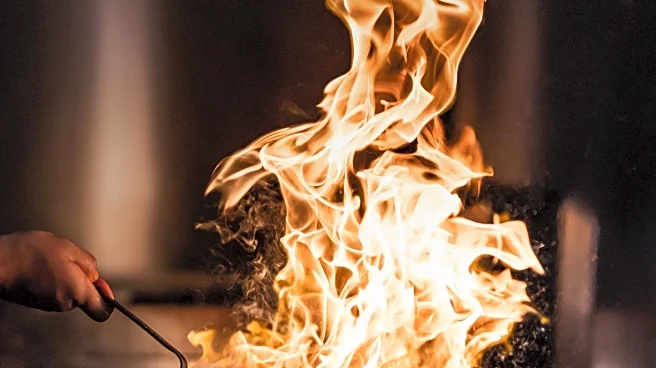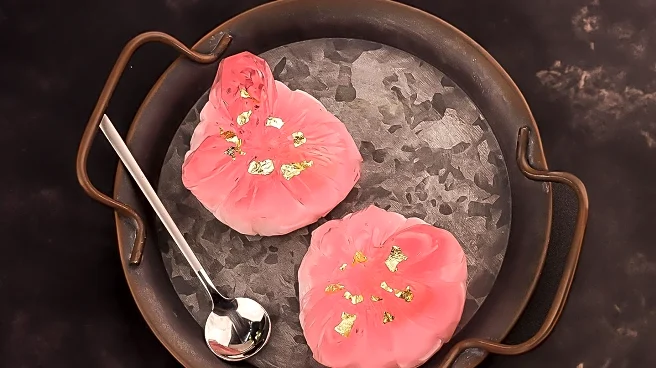What's Happening?
Chef Joe Flamm, culinary director of Chicago's BLVD Steakhouse, has shared a simple technique for achieving perfect steak doneness without the use of gadgets. This method involves using the fleshy base of the thumb as a point of comparison for the resistance of the steak when poked. By gently touching the thumb and forefinger together and using the opposite hand to poke the base of the thumb, cooks can gauge the doneness of a steak. This technique is particularly useful for home cooks who may not have access to professional meat thermometers. Flamm emphasizes the importance of understanding the transformation of steak as it cooks, noting that overcooking can lead to a tougher texture due to the drying out of the meat.
Why It's Important?
This technique offers a practical solution for home cooks seeking to achieve restaurant-quality steak without investing in expensive equipment. It democratizes the cooking process, allowing individuals to master steak preparation with minimal tools. The method also highlights the importance of texture and moisture in cooking, which are crucial for maintaining the quality of the meat. By understanding the physical changes in steak during cooking, cooks can avoid common pitfalls such as overcooking, which can compromise the flavor and tenderness of the meat. This approach aligns with the broader trend of simplifying cooking techniques while maintaining high standards.
What's Next?
Home cooks can begin practicing this technique to improve their steak cooking skills. As the method gains popularity, it may lead to a shift in how people approach cooking meat at home, potentially reducing reliance on gadgets. Culinary schools and cooking classes might incorporate this technique into their curriculum, emphasizing hands-on skills over technological dependence. Additionally, chefs and cooking enthusiasts may explore similar methods for other types of meat, expanding the application of this tactile approach.
Beyond the Headlines
This development reflects a broader cultural shift towards valuing traditional cooking skills and techniques. As technology becomes increasingly integrated into daily life, there is a growing appreciation for methods that rely on human intuition and experience. This trend may influence the culinary industry, encouraging chefs to focus on skill development and creativity rather than gadgetry. It also raises questions about the balance between technology and tradition in cooking, prompting discussions on the future of culinary education and practice.












